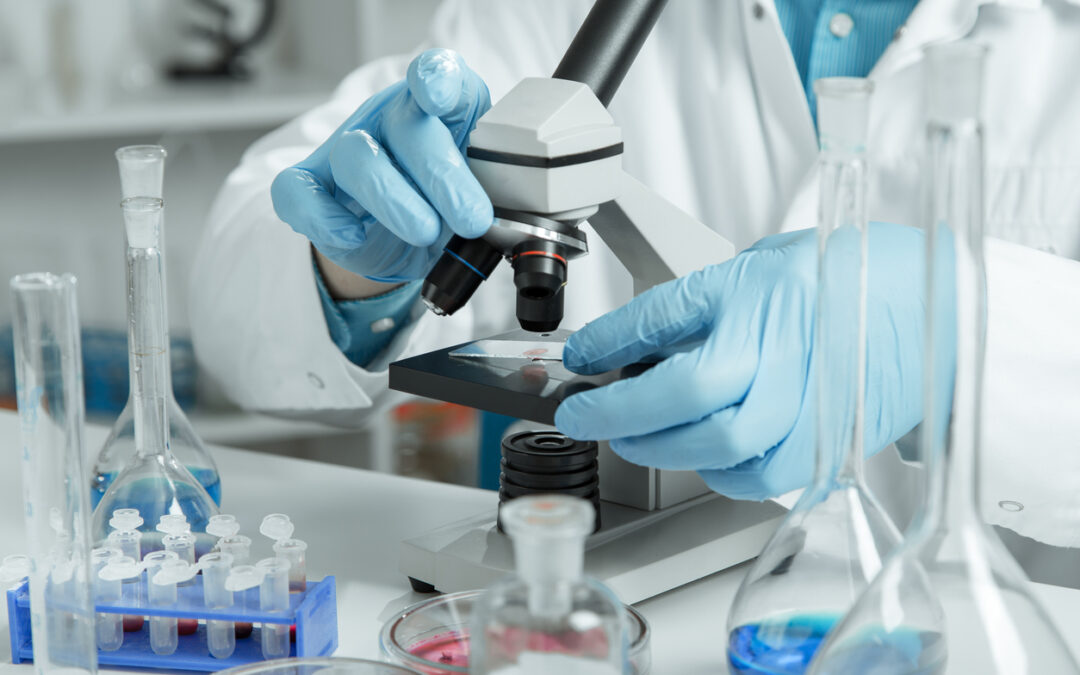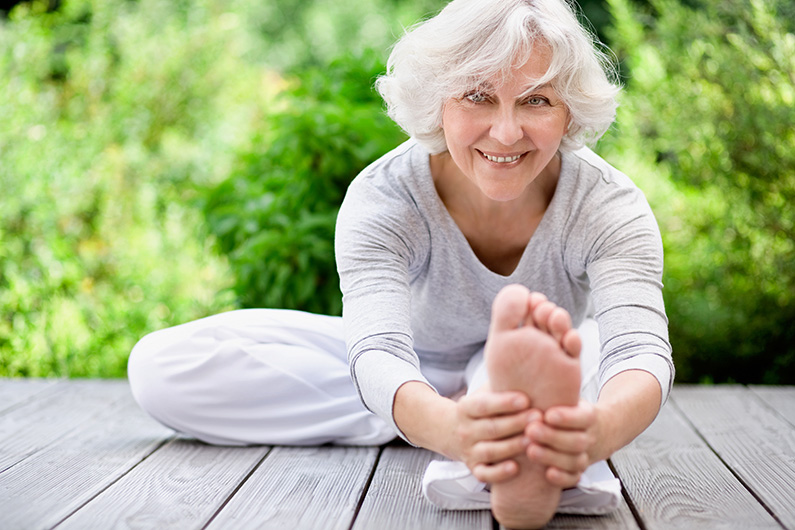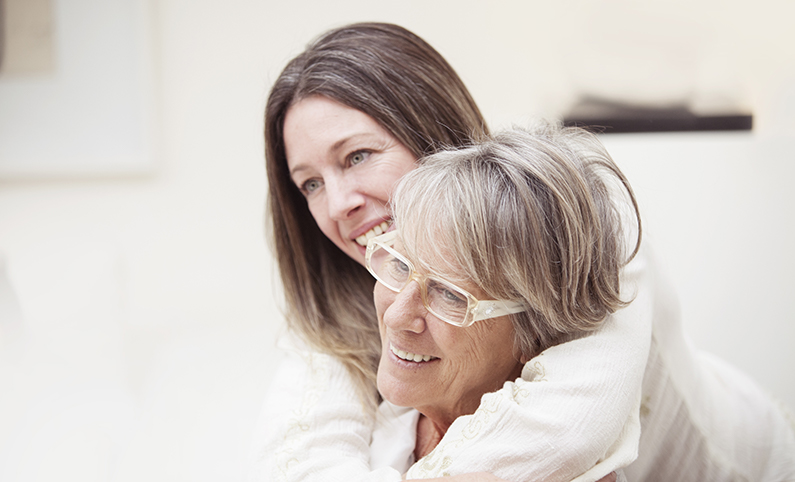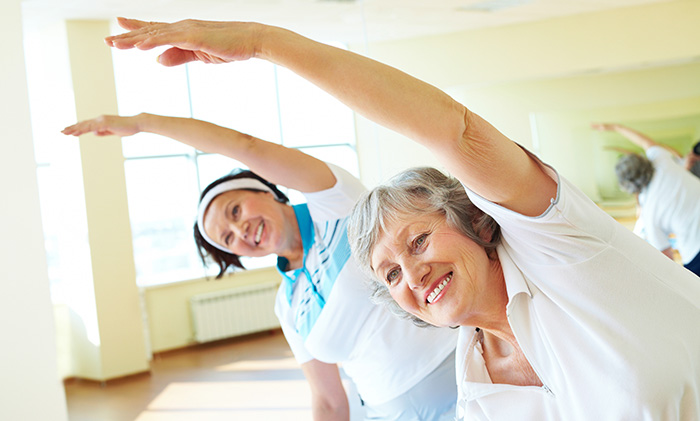
May 10, 2024 | Southern Arizona
It turns out there’s another bonus to marriage: early skin cancer detection and management. According to a study published in JAMA Dermatology, melanomas are more likely to be detected early in married people than people who are single, divorced or widowed.
How can being married help reduce my risks?
Data suggests that spouses or partners may help identify melanoma that may have otherwise gone unnoticed.
The analysis, which included 52,063 people of various marital statuses, found that skin lesions were detected sooner among married people than they were among those who were never married, divorced, or widowed. The study also showed that married people were most likely to have skin lesions looked at by a primary care physician or a skin cancer specialist, such as a dermatologist.
In other words, spouses can help in several ways by applying sunscreen in those hard to reach places, noticing new and suspicious moles on their partners, and urging their partner to get those moles checked out.
If you aren’t married, however, consider teaming up with a partner or having a physician regularly do a spot check on your skin.
Skin self-examinations are also very important. When detected early, skin cancer is almost always curable. This is why getting to know your skin though regular self-exams is so important; so that any new or changing marks or lesions can be caught quickly. It is also a good idea to be aware of the other factors that could put you at risk for melanoma so you can take the necessary steps toward prevention.
If an area on your skin looks suspicious or concerns you, speak with your doctor immediately. The sooner you have it checked out, the easier it can be to cure. Our team of cancer experts are available if you need to see a skin cancer specialist after diagnosis.
Originally posted in 2018, updated in 2024.

May 9, 2024 | Southern Arizona
Throughout my practice as a radiation oncologist, I have noticed a recurring question that patients ask; “If the surgeon sticks a needle into the tumor or if they expose the tumor to air, will the tumor spread?” The answer to the question is that realistically, the possibility is very low. In 2015, the Mayo Clinic analyzed 250 patients that had biopsies and found no risk of tumors spreading associated with the procedure. They went further and analyzed 2,000 Medicare patients with pancreatic cancer and found no significant difference in cancer spread between those that had a biopsy versus those that did not.
I was not able to find any scientific surgical data that indicates exposing a tumor to air will cause it to spread. Unfortunately, there are old case reports where tumors were ruptured, directly transected, and contamination of surgical instruments increased the risk of spread or contamination. However, today’s modern surgical techniques minimize these risks. Imaging studies such as CT scans, ultrasounds, PET scans, and MRI imaging allow better visualization of the tumor size, shape, blood supply, etc. These technologies have allowed surgeons to plan ahead on their surgery. Common examples include giving preoperative chemotherapy and radiation for locally advanced rectal cancers. Studies show this results in improved sphincter-sparing (not having a permanent colostomy) as well as improving the chances cancer doesn’t come back locally after surgery. In breast cancers, imaging studies such as MRI have allowed some patients to be treated with chemotherapy before surgery, to shrink a tumor’s size to improve surgical outcomes and increase the possibility that breast conservation therapy can be done.
Related reading: 12 Common Myths About Cancer
The importance of a biopsy or surgery is critical for a patient’s cancer treatment. A biopsy documents the presence of cancer. For most cancer treatments, more than one type of treatment is used; this includes surgery, chemotherapy, and radiation. Thus, it is important to ensure the risks involved with treatment is applied to cancer and not a benign tumor.
Biopsies are also necessary not only to justify risks of therapy but to also establish proper treatments. For most malignancies, surgery plays a primary role by removing the tumor and allowing chemotherapy and radiation to target what may have escaped or microscopic cells that may have been left behind after surgery.
A good example where surgery is not required for a cure would be anal cancer. These tumors can be cured entirely with chemotherapy and radiation. However, these tumors can sometimes be hard to distinguish between a deficient lying rectal cancer. For rectal cancer, treatment would require not only chemotherapy and radiation but also a radical surgery that sometimes leads to a permanent colostomy. The only way to distinguish these vastly different tumors and treatments is with a biopsy.
Unfortunately, many cancers are invasive or infiltrating. This means at the microscopic level; the cancer cells are breaking through protective membranes and entering lymphatic and vascular spaces. This allows cancer to spread towards lymph nodes or into the blood system. Many times cancer may have already spread before surgery. Current medical imaging may not have been able to pick up small lesions, and by the time the patient has surgery or shortly after, these lesions may have grown larger. Therefore, leading to the belief that surgery or the exposure to air caused the tumors to spread.
Since I began practicing radiation oncology over 25 years ago, there has been an explosion in cancer biology as well as drug therapy. We are now able to determine the molecular profile of a tumor. By knowing its genetic makeup, we can determine if a cancer has a high likelihood to spread and thereby benefit from chemotherapy. Additionally, the presence of specific genes also allows oncologists to be able to select particular drug therapies. When certain types of genes are found, they can increase the aggressiveness, as well as evasiveness of a tumor from the immune system. There are now specific drugs that are designed to shut this gene down causing the tumor to die or be more recognizable to the body’s immune system.
In conclusion, there is no definitive evidence that a biopsy or surgery has led to a spread of cancer. A biopsy or surgery is necessary for a cancer diagnosis, proper treatment, and in some cases, a cure.
Robert Gin, MD is a radiation oncologist at Arizona Oncology. He earned his medical degree at the University of Arizona Medical School. Dr. Gin is board certified in radiation oncology and is a member of the American Society for Radiation Oncology.

May 4, 2024 | Southern Arizona
Summer sun safety means you should focus on safe, outdoor fun while you protect your skin from damage, including dry and itchy skin, sunburns and skin cancer. Arizona typically receives 360 hours of sunshine in September, so you have plenty of opportunities to be outside. With a little planning, you can enjoy the summer sun and protect your skin at the same time.
Why is Sun Safety Important?
You might not think about it, but your skin is the body’s largest organ. It’s exposed to conditions that other organs are not because it’s on the outside instead of the inside of your body. This makes your skin vulnerable to weather and the environment, including sunlight.
While skin cancer can appear anywhere, not just the areas that were sunburned previously, some of the most common places include your face, scalp, neck, ears, lips, and the backs of your hands. Since skin cancer can be a result of sun exposure over a long period of time, not just a one-time sunburn, it is important to always practice sun safety.
According to the American Cancer Society (ACS), every year about 5.4 million Americans are diagnosed with skin cancer including basal cell skin cancer, squamous cell skin cancer, and melanoma. Melanoma—the deadliest form of skin cancer—is more often related to intense exposure and sunburn.
Is Sun Safety for Everyone?
Yes! If you have light skin, your hair is red or blonde or you sunburn easily, you have a higher risk of developing skin cancer. But people with darker skin can and do get skin cancer. ACS-funded skin cancer researchers have found that people with dark hair and dark eyes who have a gene mutation called MC1R also have a higher chance of developing melanoma if they don’t take precautions in the sun. Even if you have dark skin or tan easily, you must keep your skin safe.
Common Misbeliefs About Sun Safety
- Skin Cancer Risk Myth 1: You don’t have to worry about your skin unless you’re outside for a long time.
Reality: Even if you’re only in the sun for a few minutes at a time, you can get sunburned. Use sunscreen of at least SPF 30 all over every day, paying close attention to areas that often get exposed to the sun such as hands, arms, and face. Read more about choosing the right sunscreen for you in our blog on how to read a sunscreen label.
- Skin Cancer Risk Myth 2: Waterproof sunscreen will last all day.
Reality: Many sunscreen bottles say they’re water resistant. That means it will wear off when you get wet. This includes any activities that involve water but sunscreen can also be worn off just by sweating. If you’re outside, you should reapply every 90 minutes to two hours and right after sweating or swimming.
- Skin Cancer Risk Myth 3: Clothing will protect your skin from the sun.
Reality: While it’s a good idea to stay covered while in the sun, you should also make sure that the clothes have a tight weave so the rays won’t go through the fabric as easily. Also look for darker or bright colors and/or fabric that has been specially treated to block sunlight.
- Skin Cancer Risk Myth 4: If you get a “base tan” you don’t have to worry as much about getting a sunburn.
Reality: Many people think that getting in some tanning bed sessions will make it so that they don’t get a sunburn once they’re outside. The ACS has confirmed that the UV rays used in tanning beds are just as damaging as UV rays you’re exposed to outside. Not only can you get sunburned from the tanning bed, it is also causing as much damage to your skin as being outside with no sun protection.
- Skin Cancer Risk Myth 5: You only have to be concerned about sun exposure between 10:00 am and 4:00 pm.
Reality: The sun is strongest during those hours, but anytime you’re out in the sun you need to be careful – especially in the Arizona sun!
Steps to Stay Sun-Safe and Avoid Skin Cancer
The American Cancer Society has a fun way for you to remember how to stay safe in the sun. If you’re going outside, “Slip, Slop, Slap, and Wrap.” This means:
- Slip on a shirt.
- Slop on sunscreen.
- Slap on a hat.
- Wrap on sunglasses.
Watch out for changes in your skin like raised red patches, pink growths or flat areas that look like scars. If you find any of these, talk to your doctor. Have fun in the sun, but remember to stay sun-safe!
Originally posted in 2017, updated in 2024.

May 3, 2024 | Southern Arizona
Did you know that exercise is one of the most important actions you can take during your cancer treatment? It’s true!
New research has shown that exercise before, during, and after cancer treatments can:
- Help alleviate side effects of cancer treatment, such as fatigue, pain, and bone and muscle loss
- Fuel your appetite
- Improve your quality of life by reducing stress, anxiety, and depression
- Reduce the risk of cancer recurrence
- Help sustain your heart health
- Maintain or improve your physical abilities
- Boost your self-image and confidence
- Help control your weight
This doesn’t mean cancer patients shouldn’t take time to rest. It simply means that adding some form of regular exercise to your daily life–even during cancer treatments–can be a wise move in improving your cancer care.
How much exercise is too much?
An exercise program should be based on what’s safe and effective for the cancer patient. It should also be something that’s enjoyable. Since certain factors like the type and stage of your cancer or the amount of stamina you have may limit what you can handle, you may want to talk with your oncologist(s) before beginning a specific exercise regimen.
For cancer survivors (those who are no longer receiving treatment), The American Cancer Society recommends aiming for at least 30 minutes of moderate physical activity five days a week. Strength training should account for at least two of those days. Start slowly and progress incrementally. As you get stronger, try to increase the amount of time you spend exercising as well as the intensity of your activities.
Patients currently going through cancer treatment should never push themselves. Talking with your cancer specialist is a good way to set guidelines on an acceptable amount of exercise.
Getting Started
It’s important to remember that you can do this! Even a little exercise is better than no exercise, so start slowly and be consistent.
Some ways you can be more physically active throughout and after your cancer treatment according to The American Cancer Society may include:
- Taking the stairs instead of the elevator
- Going dancing
- Weeding the garden
- Mowing the grass
- Playing active games with children such as freeze tag or jump rope
- Walking or biking to your destination
- Working out to a DVD or doing stretches and weight-lifting while watching TV
To avoid boredom, vary your routine or exercise with a friend.
Remember, only do what you can handle. While the goal is to be more active, it is important to keep it safe, fun, and manageable.
The sooner you start exercising, the better you’ll feel.
Sources:
Originally posted in 2018, updated in 2024.

Apr 18, 2024 | Southern Arizona
Chances are you or someone you know has a close relative or friend that has been impacted by breast cancer and they may even be receiving breast cancer treatment at one of our clinics. Busting these common myths about breast cancer can help you be informed about what’s real when it comes to this disease.
Breast Cancer Myth 1: Breast cancer only occurs in women.
Though it is true more women are affected by breast cancer, it still can and does occur in men. According to the National Breast Cancer Foundation, over 2,800 men are diagnosed annually with breast cancer. It is important that a man who notices any changes in male breast tissue, including a hard lump underneath the areola or nipple, immediately follow up with his primary care physician.
Breast Cancer Myth 2: A lump in the breast is always cancer.
There are actually many potential causes of a lump in the breast, most of which are not breast cancer. These include the natural changes that occur with aging or any sort of trauma, such as a physical blow, that happened while you were younger. However, it is still important to follow up with your physician if you do notice a lump or change in breast tissue. Being proactive is the best way to detect cancer early, so if it is the reason for your lump, you can be referred to a breast cancer specialist as soon as possible.
Breast Cancer Myth 3: Most breast cancer is genetic.
Only 5 to 10% of breast cancers are thought to result from genetics.It’s not scientifically clear why some women develop breast cancer who are at low risk while some who are at high risk do not. But we do know that most breast cancers are not caused by a hereditary factor. According to the National Breast Cancer Foundation, only 5 to 10% of breast cancers are thought to result from genetics.
There are some risk factors that, if controlled, can reduce the risk of developing breast cancer. This can be done by maintaining a healthy weight, not smoking and keeping daily alcohol consumption to a minimum.
Breast Cancer Myth 4: Breast cancer is contagious.
Very few cancers arise from contagious factors, such as the HPV virus, and breast cancer is not one of them. Breast cancer is the result of cells that have mutated and are growing uncontrollably in breast tissue. It is not contagious and cannot be spread to another person by physical contact, saliva, or any other physical means.
Breast Cancer Myth 5: Deodorant and antiperspirants cause breast cancer.
The National Cancer Institute states that there is no conclusive evidence to show a link between antiperspirant or deodorant use and the development of breast cancer. This means they have reviewed studies that have claimed there is a link and decided there was no sufficient evidence and have also reviewed studies that have failed to demonstrate any link between the two.
Related reading: 12 Common Myths About Cancer
Breast Cancer Myth 6: Mammograms can make breast cancer spread.
Some people believe mammograms will cause breast cancer to spread because of the radiation or from the physical compression of the tumor. Neither of these things is true. In fact, mammograms are one of the reasons that deaths from breast cancer have declined, thanks to their ability to detect breast cancer in its early stages when it is more treatable. The patient can be referred to a breast cancer doctor quickly for treatment. While mammograms do deliver a small amount of radiation, the benefit of annual mammograms in women after age 40 outweighs the potential risks. If you still have concerns regarding mammogram screening, be sure to discuss them with your physician, who can help explain why he or she feels mammograms are appropriate for you.
Knowledge Equals Awareness
It’s great that you have taken the time to read about some common breast cancer myths and clear up any misconceptions about breast cancer that you may have had. Many people have heard these myths and have no reason to believe otherwise.
Originally posted in 2018, updated in 2024.

Apr 3, 2024 | Southern Arizona
If your oncologist told you there was something safe, free, beneficial and often enjoyable you could do to improve mental and physical health while you undergo active cancer treatment, you might enthusiastically agree right away. Or, you might be skeptical. The good news is that research shows there is such an activity: Exercise!
It’s true that cancer patients grappling with the tolls of radiation and chemotherapy typically don’t make exercise a priority. They can feel physically and mentally exhausted by their cancer treatment regimens. Ironically, if you push through your initial exhaustion, you may discover exercise gives you an abundance of energy, as well as several other benefits. Two studies focusing on breast cancer patients and one on prostate cancer patients showed that exercising during active cancer treatment often yields measurable benefits.
Researchers Study Breast Cancer Patients
It’s well-documented that exercise is beneficial to health. But does it provide extra benefits for individuals undergoing breast cancer treatment? Two studies conclude that for many patients, it does. In the first study, published in the Journal of Community and Supportive Oncology, researchers analyzed the results of 17 clinical trials involving nearly 1,200 breast cancer patients who participated in regular exercise regimens.
Patients participating in aerobic exercises (walking, jogging, swimming, cycling, etc.) experienced marked improvements in quality of life, sleep quality, self-worth, behavior, social well-being, metabolism and aerobic fitness. Patients participating in resistance training (weights, resistance bands, squats, etc.) experienced marked improvements in strength, lean body mass and loss of body fat, and slight improvements in quality of life, fatigue, cognitive function and depression.
Another promising study reported in the Supportive Care and Cancer journal followed 27 breast cancer patients undergoing treatment. The women followed a moderate resistance-training regimen for six months. None of the women developed lymphedema, which is a common side effect of breast cancer treatment.
Researchers Study Prostate Cancer Patients
A third study compared 32 prostate cancer patients participating in a combined aerobic exercise and strength training regimen with a control group of patients not exercising. After three months, the men who exercised during prostate cancer treatment were able to walk much faster than the control group and scored higher on lift-and-carry benchmark tests. The men who exercised also lost, on average, more than four pounds, shed body fat, and reported improvements in quality of life.
Exercise: Little Downside Potentially Huge Upside
Every individual and every cancer patient’s situation is different. Generally, though, experts agree that mild to moderate physical activity offers myriad potential benefits for individuals being treated for cancer. According to the American Cancer Society, exercise may:
- Prevent unwanted weight gain
- Boost mood and energy
- Ward off depression and anxiety
- Improve blood flow
- Lessen nausea
- Lower the risk of heart disease
- Prevent muscle atrophy
- Restore mobility, including the ability to do day to day activities
- Improve patients’ optimism and quality of life
Additionally, multiple studies have concluded that regular exercise may reduce the likelihood of cancer recurrence and increase long-term survival rates.
Considerations Before Beginning an Exercise Regimen
The research is clear: Exercise has little to no downside and potentially a huge upside for patients being treated for cancer. In other words, if you’re a cancer patient and don’t currently exercise, it’s time to talk to your doctor! Taking into account the type and stage of cancer you have, the treatments you’re undergoing, and your physical stamina, strength and fitness level, your doctor should be able to tailor an exercise regimen that will be safe and, hopefully, beneficial to your physical and mental well-being or can refer you to a physical therapist with special expertise in oncology rehab.
Resources from Arizona Oncology
Our team is committed to supporting you throughout your cancer experience. We coordinate and work with many foundations to help support your overall health needs. We’re here to answer questions and connect you with the resources you need, including exercise programs for cancer patients.
Originally posted in 2017. Updated in 2024.
Sources:
Page 4 of 18« First«...23456...10...»Last »








